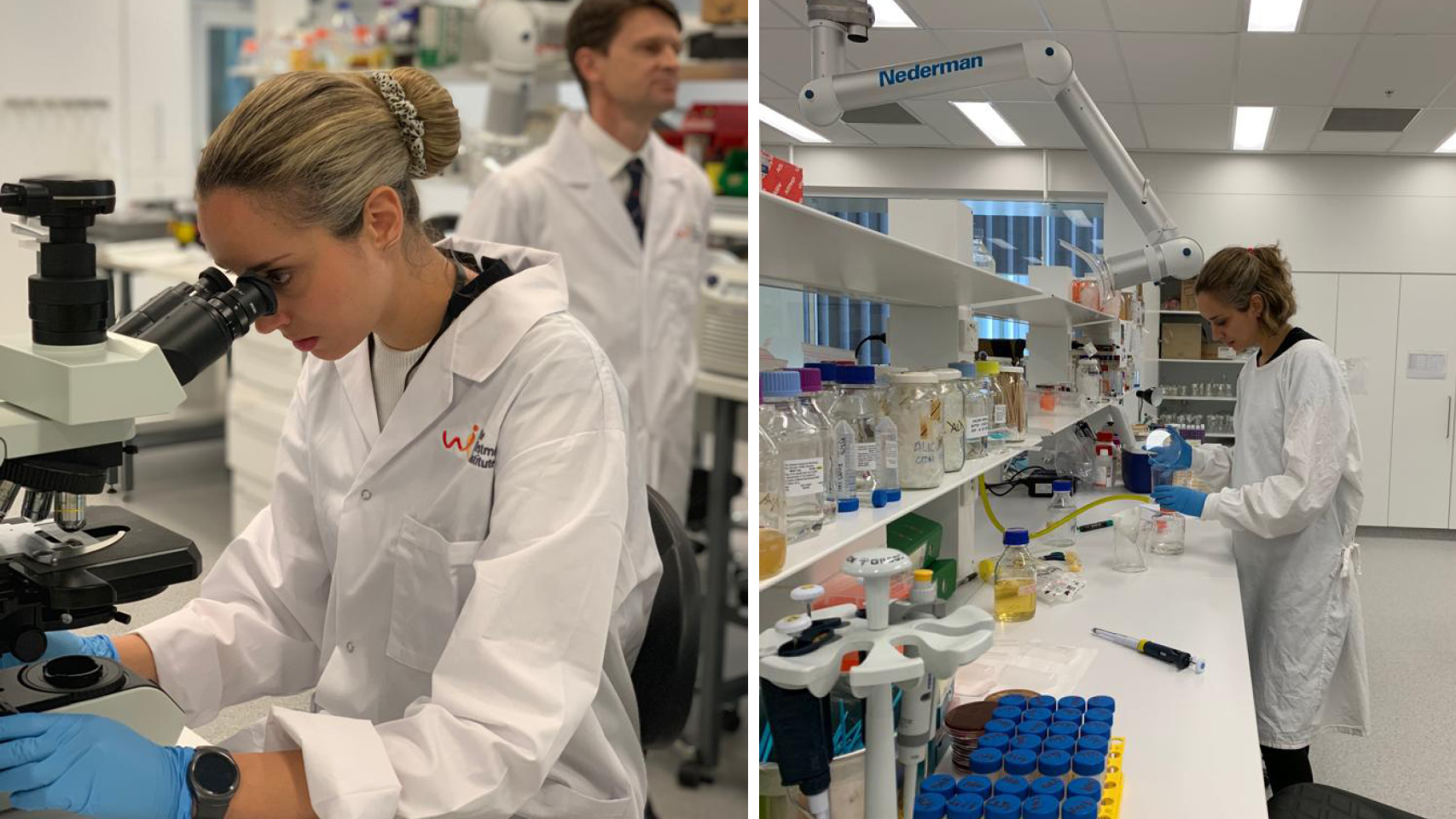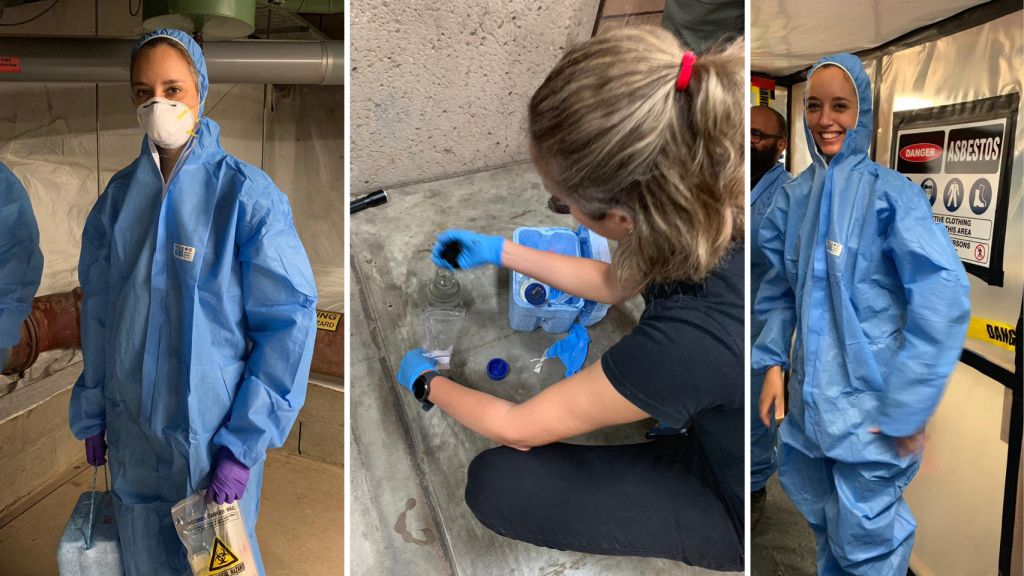How research in phage therapy is addressing the challenge of antibiotics resistance
As antibiotics resistance remains an ongoing global challenge, phage therapy is emerging as an important viable alternative to treat resistant infections. Aleksandra Petrovic Fabijan is a biologist and leading researcher engaged in phage therapy research at the Centre for Infectious Diseases and Microbiology at the Westmead Institute for Medical Research. Her work has been supported by NSW Health’s Office for Health and Medical Research through their Early-Mid Career (EMC) Grants Program.
The Office spoke with Dr Fabijan about her work in phage therapy.
Can you explain what phages are and where they come from?
Phages (also called bacteriophages) are viruses that specifically target bacteria. They are the most numerous and diverse biological organisms on earth, found wherever bacteria thrive, including soil, water and the human body. For billions of years, phages and bacteria have been locked in an epic evolutionary battle, constantly adapting to outsmart each other. This ancient struggle makes phages incredibly powerful and versatile, with the potential to revolutionise how we fight bacterial infections.

When were bacteriophages discovered and why are we only studying their full benefits now?
The phenomenon of phages killing bacteria was first observed in the late 19th century but it wasn’t until 1917 that they were identified as viruses that specifically infect and kill bacteria. This led to the early use of phage therapy to treat bacterial infections, but in the 1950s, the increasing use of antibiotics shifted the focus away from this approach. Now, as we face the global challenge of antibiotic resistance, phage therapy is re-emerging. Advances in technology have equipped us to better understand the biology of phages and harness their therapeutic potential, making them a promising solution once again.
What is phage therapy used for in healthcare?
Phage therapy is used to treat bacterial infections, particularly those resistant to multiple antibiotics. Phages are effective when used on their own and can be administered in combination with antibiotics to enhance their effectiveness, and can even help make bacteria sensitive to antibiotics they were initially resistant to. This makes phage therapy particularly valuable for chronic, unresponsive and difficult-to-treat infections.
How do we make phage therapies and administer them?
Phage therapies can be inhaled (nebulized), applied topically on wounds and administered through oral, intramuscular, subcutaneous, and other routes, depending on the infection location and treatment needs. To develop phage therapies, we isolate phages from environments rich in bacteria, which the phages feed on. The choice of sample depends on the specific bacteria we want to target. Once isolated, we engage in processes in the lab to confirm the viral nature of the phages and determine which kinds of bacteria they target (phages are picky, often targeting only one strain of bacteria). We sequence their genomes to understand their life cycle, and test their interaction with traditional antibiotics, to confirm any combined effects. We then grow the phages on their preferred bacterial hosts to produce high-concentration preparations to use in phage therapy. Finally, we purify the phages to ensure they are clean and ready for patient use.
When might phage therapy be more widely available for Australians in the future?
Phage therapy is currently in clinical trial stages in Australia. With ongoing research and successful trial outcomes, it is hoped that phage therapy will become more widely accessible within the next five to 10 years, particularly as regulatory frameworks evolve to accommodate this innovative approach, moving it from an experimental treatment to a mainstream option. We have already treated more than 40 patients, mostly intravenously, from the Westmead site alone. Phage therapy has been used to treat adults and children, patients who are critically ill on life support as well as those at home with their families, in city, regional and rural areas of NSW.

What has your research shed light on and what impacts might this knowledge have on healthcare and improving patient outcomes?
When the first clinical trial took place to research intravenous phage ‘cocktails’ for patients with severe infections, I was the lead phage scientist on the project. My work was reported in Nature Microbiology in 2020 and led to a Randomized Controlled Trials of phage therapy for severe infections. This was followed by the first open-label clinical trial for phage therapy in Australia, which is currently ongoing (under the name STAMP). My further research has uncovered the common but previously overlooked adaptation of bacteria to different growth states. By addressing these complex interactions, my research helps to ensure that phage therapies are safe, effective, and tailored to real-world clinical scenarios. Witnessing the life-saving impact of phage therapy on patients is incredibly rewarding.
What other applications do you hope your work has in the future?
Currently all diagnostic lab tests for phage testing are based on fast-growing bacteria under optimal conditions. I hope to create a more robust diagnostic approach including slow-growing bacteria, which better represent bacterial growth states in patients and in nature. A further goal is to develop a system to accurately predict phage therapy resistance development in patients so we can address it proactively during treatment and also try to prevent it. I am also working on developing new in vitro testing systems that will more accurately predict phage and antibiotic efficacy in patients.
How have the grants you received from the NSW Health Office for Health and Medical Research supported your career and work?
The Early-Mid Career Grant in Phage Therapy (2021-2024), from the Office for Health and Medical Research, has been instrumental in advancing my research. The Grant provided essential funding for my project, facilitated essential collaborations with leading experts and significantly boosted my career. Recently it led to another career highlight, when I was awarded the NHMRC Investigator Emerging Leadership Fellowship grant in 2024 (for the funding period 2025-29), which will ensure continuation of my research program.
Updated 5 months ago